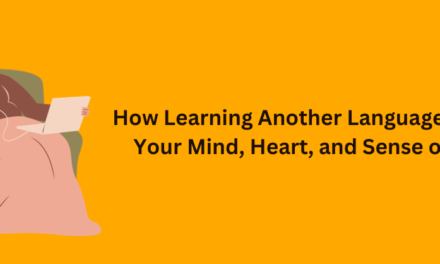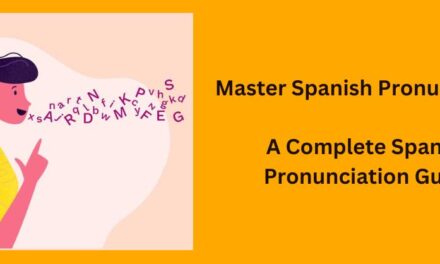The Most Challenging Languages for English Speakers to Learn

For native English speakers, the journey towards learning a new language ranges from quick and smooth to long and arduous depending on the language’s similarities or differences.
While languages like Spanish and French may come more easily, those farther removed from English pose significant challenges that demand diligence and creativity to overcome.
This comprehensive guide examines the factors that contribute to a language’s difficulty level and profiles which languages prove most problematic for English speakers to master.
We’ll explore the writing systems, phonology, morphology, syntax, culture contexts and more that cause the most headaches for English-speakers in their language learning quests.
Determining Language Difficulty
Several key factors influence how hard or easy a language is for a native English speaker to learn. These include:
- Writing System – Alphabetic, logographic, characters, directionality
- Phonology – Pronunciation of vowels, consonants, tones, stress
- Morphology – How words are formed from roots, prefixes, suffixes
- Syntax – Word order, grammatical cases, rules of agreement
- Culture – Social rituals and customs that affect language use
- Vocabulary – How many shared cognates or loan words
The more significant differences there are between English and the target language across these factors, the harder that language will be to learn.
However, difficulty is also subjective based on the learner’s motivations and aptitudes. A language is only truly impossible to learn if you believe it is.
Categorizing Language Difficulty
Based on the critical factors above, languages can be grouped into broad categories ranging from the least to the most challenging for native English speakers:
Category I: Very Easy
Languages that share the same Latin alphabet and have similar grammar, vocabulary, word order and pronunciation. Cognates are common and comprehension fairly straightforward.
This includes major European languages:
- Spanish – Nearly identical alphabet, shared Latin roots in vocabulary. Simple grammar with familiar subject-verb-object order. Highly phonetic pronunciation.
- French – Latin alphabet, shared Norman vocabulary influences, similar word order. Complexities in spelling and pronunciation zones.
- Italian – Highly phonetic, same subject-verb-object structure. Close lexical ties to English.
Category II: Moderately Easy
Languages that have some key differences from English but are still relatively accessible to learn. May include:
- Portuguese – Fewer regular shared words than Spanish/French but similar roots. Some different sounds.
- German – Three grammatical genders, cases, and more complex grammar system. But shared Germanic roots.
- Dutch – Unique pronunciation patterns take adjustment but shares Germanic vocabulary.
- Swedish – Tonal pitch accent system adds complexity but Germanic lexical similarities.
- Norwegian – Verb inflection and altered word order but familiar alphabet.
Category III: Medium Difficulty
Languages that have more significant differences in writing systems, sounds, and grammar rules from English start ramping up the challenge:
- Russian – Completely different Cyrillic alphabet. Heavily inflected with cases, gendered nouns. No articles.
- Greek – Unique 24-letter alphabet. Verb conjugations and definite articles. Some tricky sounds.
- Hebrew – Written right-to-left. New alphabet to learn. Numerous grammar exceptions.
- Swahili – Complex agglutinative system of affixes and prefixes. Unfamiliar phonemes.
- Hindi – Written right to left. Consonant clusters. Formal and informal verb forms.
Category IV: Very Difficult
Languages that differ greatly from English in multiple core areas require deeper time commitment:
- Arabic – Different script written right to left. Very complex morphology and grammar. Diglossia.
- Japanese – Multiple writing systems used concurrently. Intricate system of honorifics.
- Korean – Unique phonemes, honorifics, particles, and SOV word order. Own alphabet.
- Hungarian – Heavily inflected with cases. No word order rules. Few cognates.
Category V: Exceptionally Difficult
Languages that are alien to English speakers across nearly every dimension, requiring extensive immersion:
- Mandarin – Tones, logographic writing of characters representing ideas. Minimal word order.
- Finnish – Extremely long and complex words with lengthy inflection and agglutination. Vastly different vocabulary.
- Georgian – Unique alphabet. Consonant clusters. Free flowing word order. Unfamiliar sounds.
- Thai – Tonal, alphabet represents consonants and vowels separately. Completely new writing system.
- Basque – Isolate language with no known relatives. Heavy use of cases. Highly agglutinative.
- Navajo – Tonal, complex and unpredictable verb formations. Unique syntax and sounds.
Overall Most Difficult Language for English Speakers
Mandarin Chinese Emerges as the Overall Most Difficult Language for English Speakers:
- There are no cognates or shared vocabulary, meaning words must be learned from scratch.
- Mandarin relies heavily on tones to alter word meaning, a concept entirely foreign to English speakers. Four distinct tones must be mastered.
- The logographic writing system is exponentially harder to learn than an alphabet. Each character represents a concept or idea rather than a sound. Over 3,000 characters are used for literacy.
- Grammar and syntax have little in common with English. There are no plural markers, minimal verbs, no articles, and a subject-verb-object order is not rigidly followed.
- The cultural context guides much of language use, requiring insight into Chinese customs and communication tendencies. Concepts of formality, age hierarchy, and indirectness differ greatly from Western norms.
For native English speakers, Mandarin requires a deep investment of consistent study, practice, and cultural immersion to gain proficiency.
But its intricacies also make mastering it exceptionally rewarding.
Arabic Also Poses Major Hurdles:
- It is written right-to-left in a different script style entirely from the Latin alphabet. The ornamental cursive scripts require extensive practice.
- Arabic has very complex morphology including prefixes, suffixes, and patterns that modify root words in ways entirely foreign to English.
- Grammatical gender, cases, and strict agreement rules add another layer of difficulty. States of nouns dictate the form of surrounding verbs, adjectives and pronouns.
- The cultural nuance of the Arab world informs Arabic linguistic conventions and usage. Honorifics, customs of hospitality, and greetings bear great importance.
- Arabic has diglossia between the formal Modern Standard Arabic and numerous informal regional dialects which have their own vocabulary and rules.
For English speakers, Arabic requires meticulous grammar practice, cultural insight, and vocabulary memorization to make tangible progress in reading, writing, speaking, and listening. Total immersion is ideal to master its complexities.
The Japanese Writing System Poses Extreme Challenges:
- Japanese is written using four distinct scripts concurrently: hiragana, katakana, romaji, and kanji. This requires intensive memorization.
- Hiragana and katakana each have 50+ characters that represent syllabic sounds. Kanji uses thousands of morphographic symbols adopted from Chinese.
- Kanji characters have multiple pronunciations that vary by context. The same character could have up to a dozen different readings.
- Japanese sentences often omit subject pronouns and objects that are implied through context, making sentences very ambiguous to decode for English speakers.
To make tangible progress in Japanese literacy requires daily practice writing the scripts and memorizing characters. Speaking is made harder by unfamiliar phonemes and intricate social customs.
Agglutinative Languages Like Korean, Turkish, Hungarian, and Finnish are Brutally Complex:
- They rely heavily on affixes, prefixes, suffixes to modify root words. Words are often incredibly long, carrying much grammar meaning.
- The grammar is built into the words themselves through inflection and derivation. This requires immense memorization efforts.
- They often utilize free flowing word order, complex consonant clusters, unfamiliar sounds, and vowel harmony rules.
- Agglutination allows for great specificity of meaning, but results in a staggeringly vast vocabulary that is tough to gain command of.
- Languages like Finnish and Hungarian have over 15 cases while Turkish has vowel harmony affecting conjugation. These add layers of complexity.
Succeeding in highly agglutinative languages requires determination, targeted memorization, speech practice, and total immersion. But gradually unraveling their logic is deeply rewarding.
Tonal Languages Like Thai and Vietnamese Add Pitch Complexity:
- Tones involve pitching words at different levels that drastically alter their meaning. Getting tones wrong changes the meaning entirely.
- English speakers must develop an ear for detecting very subtle tone variations and learn to replicate them accurately. This adds a challenging phonetic layer.
- Mastering tonal variations combined with unfamiliar consonant and vowel sounds provides a steep challenge for English speakers unaccustomed to monitoring pitch while speaking.
Dedicated listening practice, speech drills, and self-recording help develop tone awareness and proficiency when learning tonal languages. Mimicking native speakers is key.
Cultural Context Also Plays a Key Role in Language Difficulty:
- Social customs, traditions, and norms for communication vary widely across cultures. This affects how languages are actually used in daily life.
- Languages like Japanese and Korean rely heavily on honorifics, levels of formality, and indirect modes of expression that follow strict cultural guidelines.
- The best way to learn is through total immersion in the target language’s culture. Picking up on sociolinguistic cues is vital to mastering communication.
- Understanding cultural perspectives, values, and conversation conventions is just as key as vocabulary or grammar rules to reach fluency.
Learning languages with deeply complex cultural components requires getting extensive exposure to real-world language use and lived experiences within the culture.
Media, books, and speech communities help gain this valuable contextual knowledge.
Conclusion: Any Language Can Be Learned with Perseverance
While some languages clearly pose greater challenges for native English speakers, any language can be mastered through dedication and immersion.
The journey towards fluency may be longer and require more strategies to overcome struggles, but the deep sense of accomplishment makes it worthwhile.
Approaching new languages with patience and creativity to overcome their unique hurdles will help smooth the path to proficiency. Set small goals, listen extensively, practice daily, and celebrate small wins.
With passion and perseverance, even the most challenging languages will slowly unravel their mysteries.









